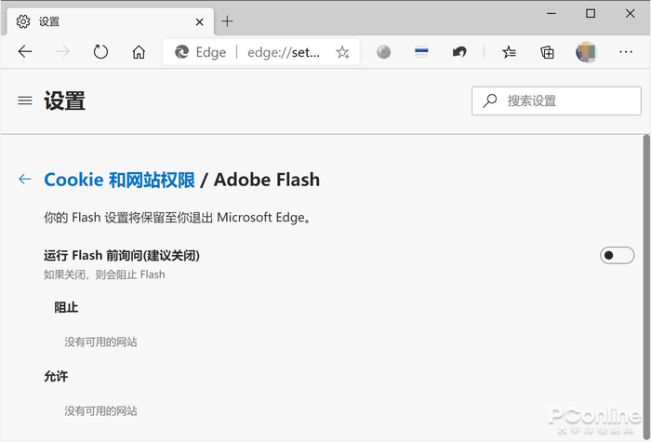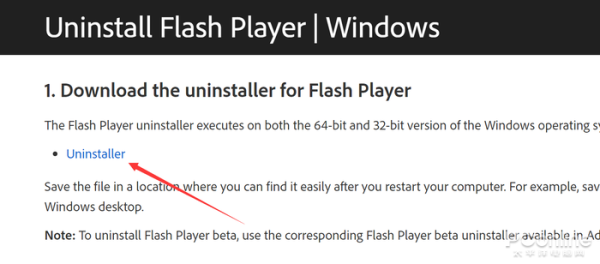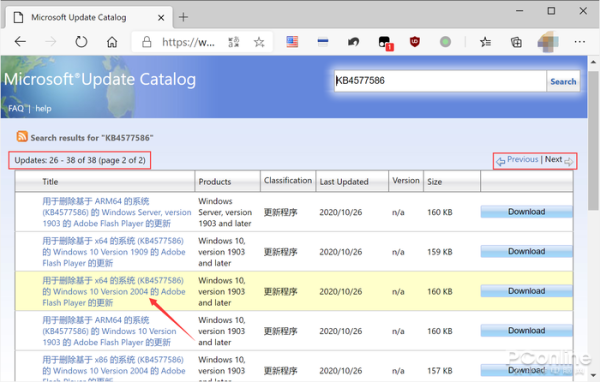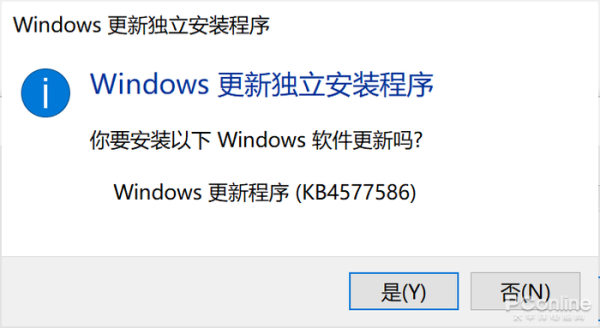本文共 1176 字,大约阅读时间需要 3 分钟。
| Flash终于走向生命的终结!过去几年,业界一直在不断提醒用户,Flash将会在2021年彻底淘汰,呼吁大家卸载Flash。现在Flash的终点已经到来,Flash的开发商Adobe自身也强烈建议用户马上卸载Flash。微软也表示,将会在未来的更新中,将Flash从系统中删除。那么问题来了,如果现在就想要彻底从Windows10中卸载Flash,要怎么做? |

在Windows10中,Flash是系统自带的,我们无法直接通过应用管理来找到Flash,所以也没法从系统设置或者控制面板中卸载它。Flash的路径为“C:\Windows\System32\Macromed\Flash”,通过直接删除相应的文件来清理掉Flash,也太过简单粗暴,可能会引发其他问题,并不推荐大家这么做。

Edge浏览器提供了禁用Flash的功能,但这并不意味着Flash已经从Windows10中卸载掉。如果你对Flash存在洁癖,那就一起来看看如何彻底在Windows10中删除Flash吧。
方法一:通过Adobe Flash Uninstaller卸载
这是Adobe官方提供的方法。首先,我们需要先开启下方这个Adobe官方提供的Flash删除工具的页面。
Uninstall Flash Player for Windows:https://helpx.adobe.com/flash-player/kb/uninstall-flash-player-windows.html
在页面中,找到Flash卸载器的下载链接,如下图:


方法二:通过Windows KB4577586补丁卸载
这是微软官方提供的补丁,唯一作用就在于从系统中彻底删除Flash。目前KB4577586仍未通过Windows Update向用户推送,但我们可以手动下载安装它。
KB4577586补丁:https://www.catalog.update.microsoft.com/Search.aspx?q=KB4577586
注意,KB4577586补丁的下载页面中,列表提供了对应不同系统的版本,而且列表有两页。如果你目前使用最新的Windows 10 20H2系统,那么可以在第二页中找到用于x86/x64/ARM64(取决用的是64位、32位或者是ARM版本系统)的“Windows 10 Version 2004”的版本,这个版本的补丁适用于Windows 10 1903之后的系统。


总结
Flash存在的问题大家都已经耳熟能详了,无论从安全、效率还是功能的角度来看,Flash都已经不合时宜。当前阻挡大家告别Flash的最大原因,还是一些网站至今仍采用Flash作为功能入口,希望这些网站好自为之,不要再因循守旧,是时候拥抱HTML5,带来更好的用户体验了。
本文地址:
转载地址:http://qntmz.baihongyu.com/